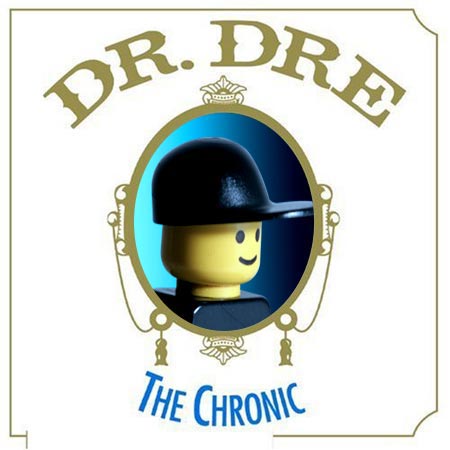Instead, the site will become more of a stripped-down MySpace for bands wanting to put their music online. Disappointing because Muxtape, as originally conceived, was obviously what everyone but the “music industry” wanted. Some of that simplistic magic will likely transfer over to the new incarnation but it won’t be as cool as mix tapes for your pals. (thx, mark)
I love music. I believe that for people who love music, the desire to share it is innate and crucial for music itself. When we find a song we love, we beckon our friends over to the turntable, we loan them the CD, we turn up the car stereo, we put it on a mixtape. We do this because music makes us feel and we want someone else to feel it, too.
The story of Muxtape began when I had a weekly show at my university’s radio station in Oregon. In addition to keeping the station’s regular log I compiled my playlists into a web page, with each show represented by a simple block that corresponded to a cassette recording for that week. At the time, mixtapes were already well into their twilight, but long after my show ended I couldn’t stop thinking about how the playlist page served a similar purpose, and in many ways served it better. Like a mixtape, each playlist was a curated group that was greater than the sum of its parts. Unlike a mixtape, it wasn’t constrained by any physical boundaries of dissemination, but… it also didn’t contain any actual music. Someone might come across the page and smile knowingly at the songs they knew, but shifting the burden of actually compiling the mix to its intended listener defeated the purpose entirely.
Five years later, internet technology had advanced significantly. I was working on experimental user interfaces for web sites when I started thinking about that playlist page again, and ultimately set out to bring it to life. My desire to share music (in the mixtape sense) hadn’t gone anywhere, but the channels to do so were becoming extinct. Popular blogging services allow you to post audio files in an ephemeral sort of way, but it wasn’t the context I was looking for. A physical cassette tape in your hands has such an insistent aesthetic; just holding one makes you want to find a tape player to fulfill its destiny. My goal with Muxtape’s design was to translate some of that tactility into the digital world, to build a context around the music that gave it a little extra spark of life and made the holder anxious to listen.
The first version was a one-page supplement to my tumblr, and was more or less identical to what it would become later. The feedback was great, and the number one question rapidly became “can you make one for me, too?” At first I started thinking about ways I could package the source code, but the more I thought about it the more it seemed like massively wasted potential. Distributing the source would mean limiting access to the small niche of people who operate their own web server, whereas I wanted to make something that was accessible to anyone who loves music. The natural conclusion was a centralized service, which suddenly unfolded whole other dimensions of possibility for serendipitous music discovery. What seemed before like the hollow shell of a mixtape now seemed like its evolution. I knew I had to try building it. Three weeks of long nights later, I launched Muxtape.
It was successful very quickly. 8,685 users registered in the first 24 hours, 97,748 in the first month with 1.2 million unique visitors and a healthy growth rate. Lots of press. Rampant speculation. Tech rags either lauded it or declared it an instant failure. Everyone was excited. I was thrilled.
There was a popular misconception that Muxtape only survived because it was “flying under the radar,” and the moment the major labels found out about it it’d be shut down. In actuality, the labels and the RIAA read web sites like everyone else, and I heard from them both within a week or so. An RIAA notice arrived in triplicate, via email, registered mail, and FedEx overnight (with print and CD versions). They demanded that I take down six specific muxtapes they felt were infringing, so I did.
Around the same time I got a call from the VP of anti-piracy at one of the majors. After I picked up the phone his first words were, “Justin, I just have one question for you: where do I send the summons and complaint?” The conversation picked up from there. There was no summons, it was an intimidation tactic setting the tone for the business development meeting he was proposing, the true reason for the call. Around the same time another one of the big four’s business developers reached out to me, too.
I spent the next month listening. I talked to a lot of very smart lawyers and other people whose opinions on the matter I respected, trying to gain a consensus for Muxtape’s legality. The only consensus seemed to be that there was no consensus. I had two dozen slightly different opinions that ran the gamut from “Muxtape is 100% legal and you’re on solid ground,” to “Muxtape is a cesspool of piracy and I hope you’re ready for a hundred million dollar lawsuit and a stint at Riker’s.”
In the end, Muxtape’s legality was moot. I didn’t have any money to defend against a lawsuit, just or not, so the major labels had an ax over my head either way. I always told myself I’d remove any artist or label that contacted me and objected, no questions asked. Not a single one ever did. On the contrary, every artist I heard from was a fan of the site and excited about its possibilities. I got calls from the marketing departments of big labels whose corporate parents were supposed to be outraged, wanting to know how they get could their latest acts on the home page. Smaller labels wanted to feature their content in other creative ways. It seemed obvious Muxtape had value for listeners and artists alike.
In May I had my first meeting with a major label, Universal Music Group. I went alone and prepared myself for the worst, having spent the last decade toeing the indie party line that the big labels were hopelessly obstinate luddites with no idea what was good for them. I’m here to tell you now that the labels understand their business a lot better than most people suspect, although they each have their own surprisingly distinct personality when it comes to how they approach the future. The gentlemen I met at Universal were incredibly receptive and tactful; I didn’t have to sell them on why Muxtape was good for them, they knew it was cool and just wanted to get paid. I sympathized with that. I told them I needed some time to get a proposal together and we left things in limbo.
A few weeks later I had a meeting with EMI, the character of which was much different. I walked into a conference room and shook eight or nine hands, sitting down at a conference table with a phonebook-thick file labeled “Muxtape” laying on it. The people I met formed a semi-circle around me like a split brain, legal on one side and business development on the other. The meeting alternated between an intense grilling from the legal side (“you are a willful infringer and we are mere hours from shutting you down”) and an awkward discussion with the business side (“assuming we don’t shut you down, how do you see us working together?”). I asked for two weeks to make a proposal, they gave me two days.
I had to make a decision. As I saw it I had three options. The first was to just shut everything down, which I never really considered. The second was to ban major label content entirely, which might have solved the immediate crisis, but had two strong points against it. The first, most visibly, was that it would prevent people from using the majority of available music in their mixes. The second was that it did nothing to address the deeper questions surrounding ownership and usage for everyone else who wasn’t a major label: mid-size labels and independent artists who have just as fundamental a right to address how their content is used as a large corporation, even if they don’t carry quite as big a stick.
The third option was to approach a fully licensed model, which I had been edging toward since I met with Universal. I knew other licensed services so far had met with mixed success, but I also knew Muxtape was different and that it was at least worth exploring. The question about whether or not the labels saw value in it had been answered, the new question was how much it was going to cost.
It was June. I approached a Fifth Ave law firm about representing me in licensing negotiations with the major labels, and they took me on. Two weeks later I met with all four, flanked by lawyers this time, and started the slow process of working out a deal. The first round of terms were stiff and complex, but not nearly as bad as I’d imagined, and I managed to convince them that allowing Muxtape to continue to operate was in everyone’s best interest. Things were going well. I spent the next two months talking with investors, designing the next phases of the site itself, and supervising the negotiations. A big concern was getting a deal that took into consideration the fact that Muxtape wasn’t a straightforward on-demand service, and should pay accordingly less than a service that was. Another reason I liked the licensing option from the outset was that it seemed like an uncommon win-win; I didn’t want the ability to search and stream any song at any given notice, and they were reluctant to offer it (for the price, anyway). Muxtape’s unusual limitations were its strength in more ways than one.
The first red flag came in August. Up until then all the discussion had been about numbers, but as we closed in on an agreement the talk shifted to things like guaranteed placement and “marketing opportunities.” I was denied the possibility of releasing a mobile version of Muxtape. My flexibility was being constricted. I had been worried about Muxtape getting a fair deal, but my biggest concern all along was maintaing the integrity and experience of the site (one of the reasons I wanted to license in the first place). Now it wasn’t so simple; I had agreed to a variety of encroachments into Muxtape’s financials because I wanted to play ball, but giving up any kind of editorial or creative control was something I had a much harder time swallowing.
I was wrestling with this when, on August 15th, I received notice from Amazon Web Services (the platform that hosts Muxtape’s servers and files) that they had received a complaint from the RIAA. Per Amazon’s terms, I had one business day to remove an incredibly long list of songs or face having my servers shut down and data deleted. This came as a big surprise to me, as I’d been thinking that I hadn’t heard from the RIAA in a long time because I had an understanding with the labels. I had a panicked exchange of emails with Amazon, trying to explain that I was in the middle of a licensing deal, that I suspected it was a clerical error, and that I was doing everything I could to get someone to vouch for me on a summer Friday afternoon. My one business day extended over the weekend, and on Monday when I wasn’t able to produce the documentation Amazon wanted (or even get someone from the RIAA on the phone), the servers were shut down and I was locked out of the account. I moved the domain name to a new server with a short message and the very real expectation that I could get it sorted out. I still thought it was all just a big mistake. I was wrong.
Over the next week I learned a little more, mainly that the RIAA moves quite autonomously from their label parents and that the understanding I had with them didn’t necessarily carry over. I also learned that none of the labels were especially interested in helping me out, and from their perspective it had no bearing on the negotiations. I disagreed. The deals were still weeks or months away (an eternity on the internet) meaning that at best, Muxtape was going to be down until the end of year. There was also still the matter of how to pay for it; getting investment is hard enough in this volatile space even with a wildly successful and growing web site, it became an entirely different proposition with no web site at all.
And so I made one of the hardest decisions I’ve ever faced: I walked away from the licensing deals. They had become too complex for a site founded on simplicity, too restrictive and hostile to continue to innovate the way I wanted to. They’d already taken so much attention away from development that I started to question my own motivations. I didn’t get into this to build a big company as fast as I could no matter what the cost, I got into this to make something simple and beautiful for people who love music, and I plan to continue doing that. As promised, the site is coming back, but not as you’ve known. I’m taking a feature that was in development in the early stages and making it the new central focus.
Muxtape is relaunching as a service exclusively for bands, offering an extremely powerful platform with unheard-of simplicity for artists to thrive on the internet. Musicians in 2008 without access to a full time web developer have few options when it comes to establishing themselves online, but their needs often revolve around a common set of problems. The new Muxtape will allow bands to upload their own music and offer an embeddable player that works anywhere on the web, in addition to the original muxtape format. Bands will be able to assemble an attractive profile with simple modules that enable optional functionality such as a calendar, photos, comments, downloads and sales, or anything else they need. The system has been built from the ground up to be extended infinitely and is wrapped in a template system that will be open to CSS designers. There will be more details soon. The beta is still private at the moment, but that will change in the coming weeks.
I realize this is a somewhat radical shift in functionality, but Muxtape’s core goals haven’t changed. I still want to challenge the way we experience music online, and I still want to work to enable what I think is the most interesting aspect of interconnected music: discovering new stuff.
Thank to you everyone who made Muxtape the incredible place it was in its first phase, it couldn’t have happened without your mixes. The industry will catch up some day, it pretty much has to.
Justin







Stay Connected